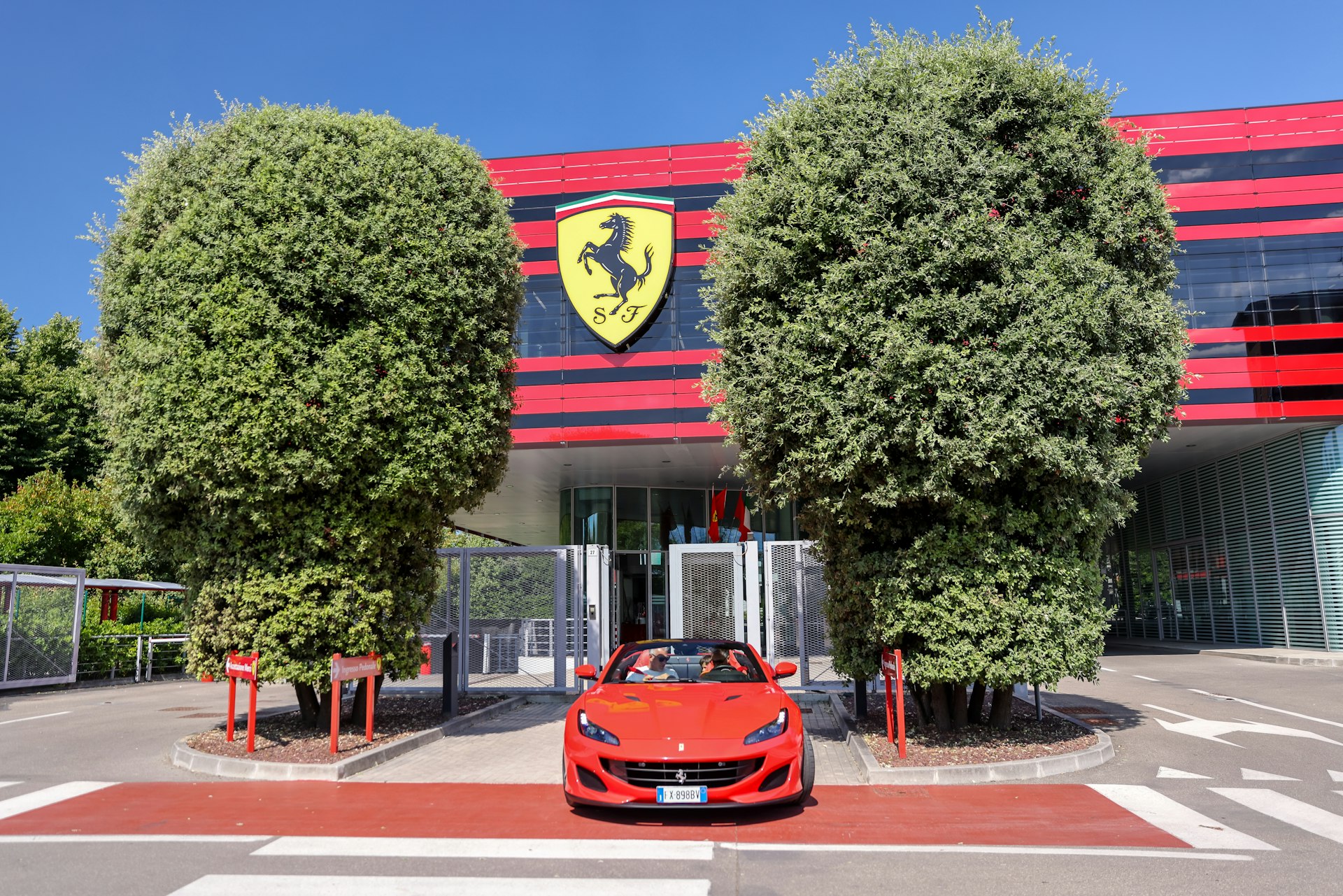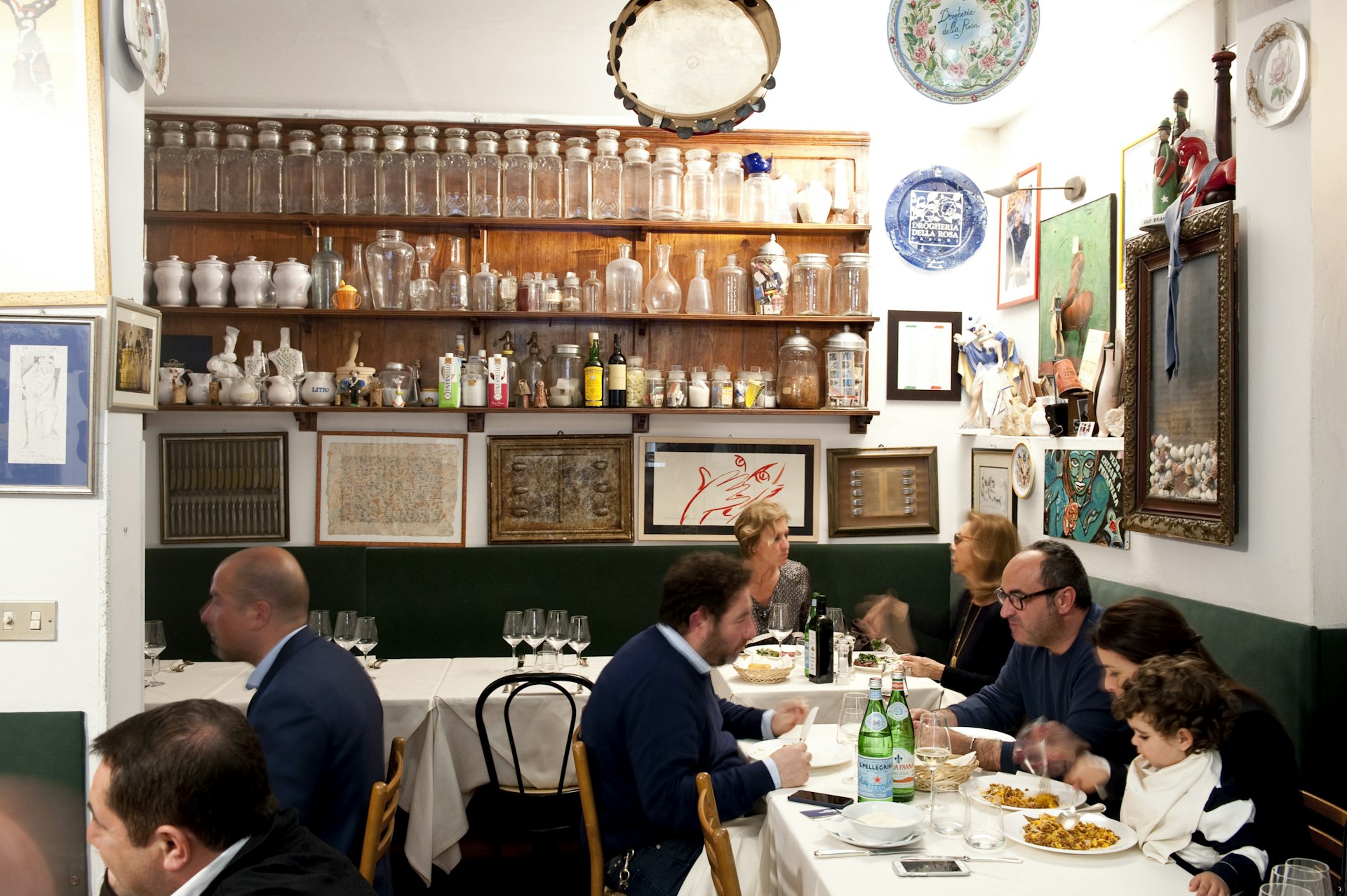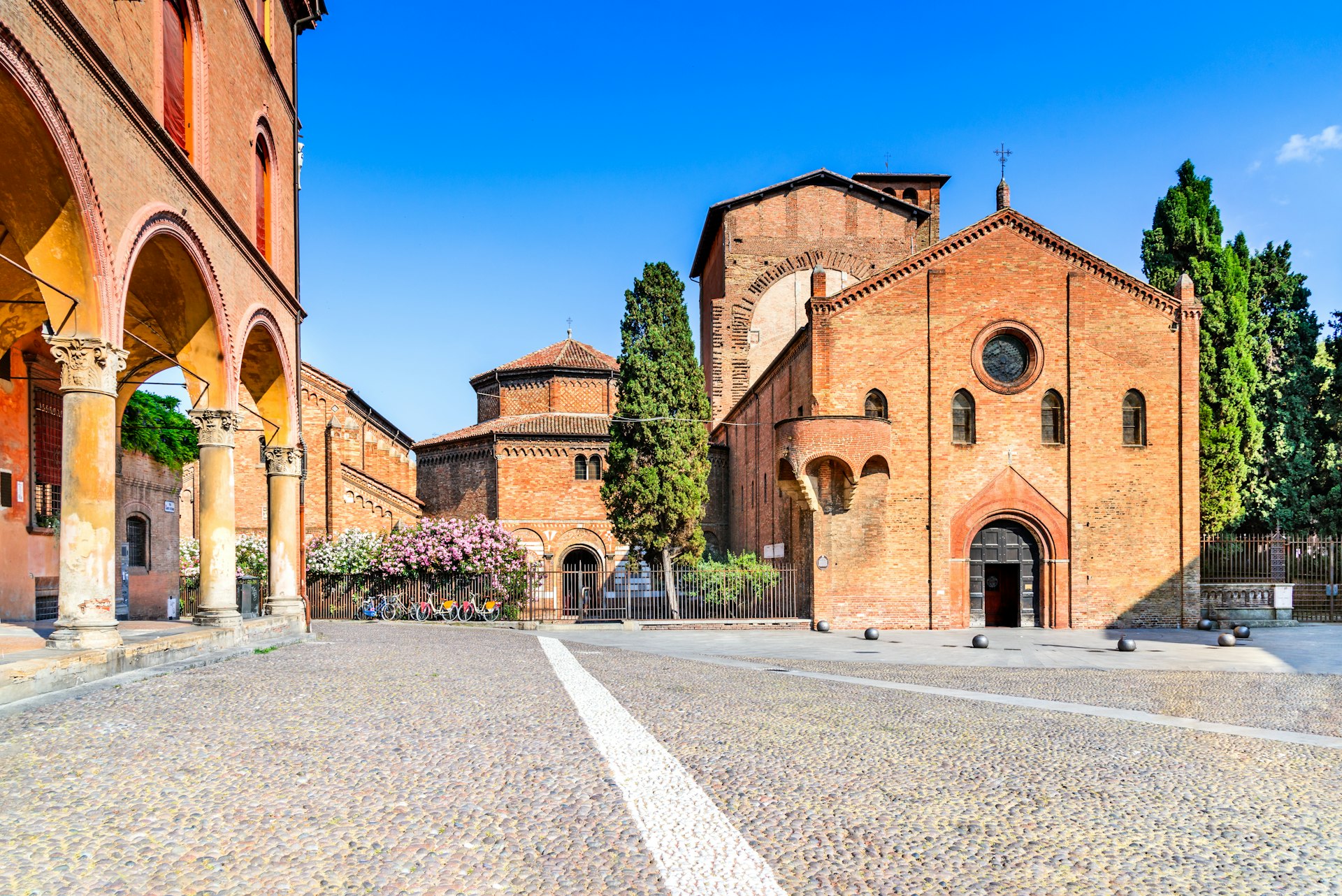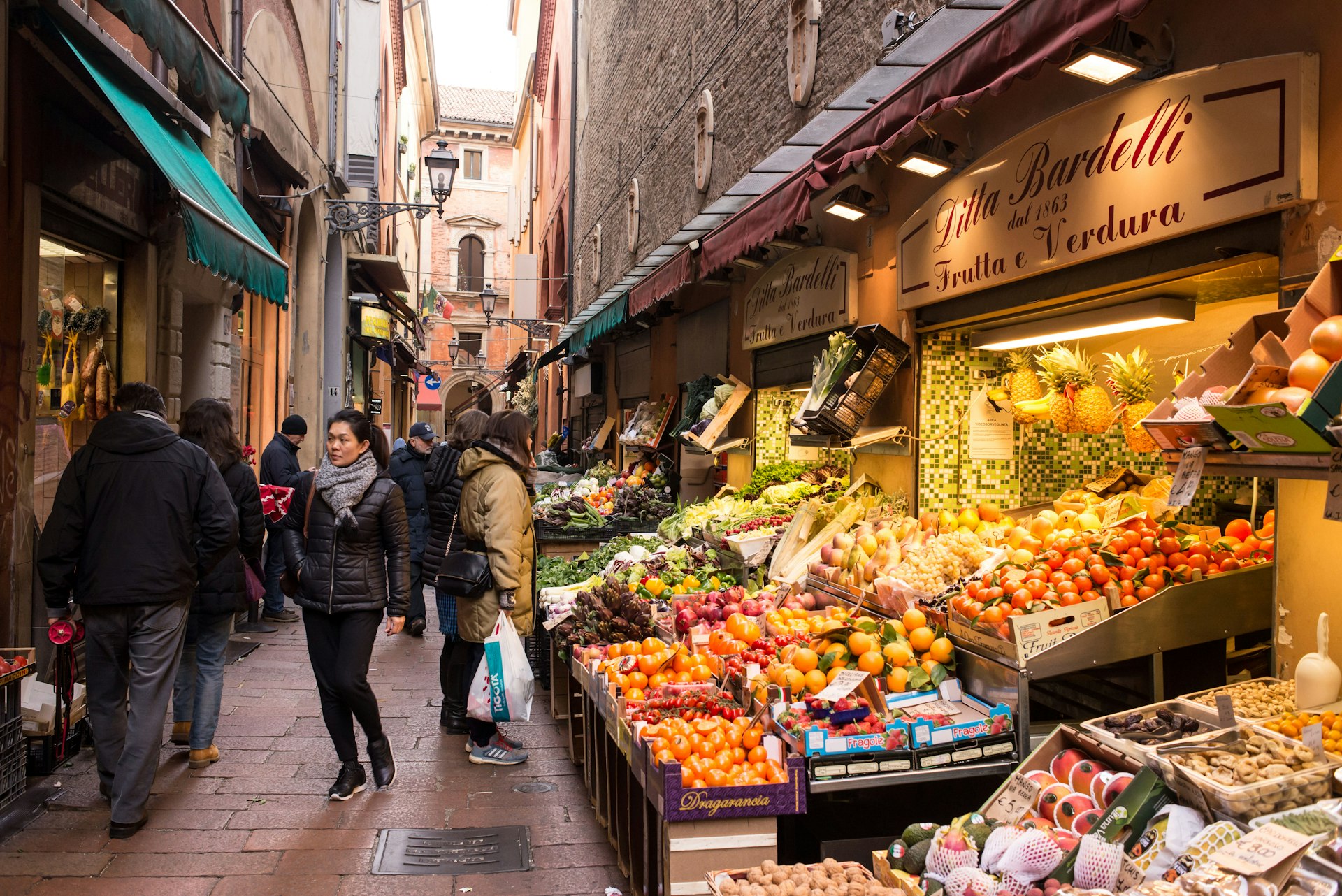Lovingly referred to as La Grassa (the fat one, for its hearty food traditions), La Dotta (the learned one, a nod to its famed university, founded in 1088) and La Rossa (the red one, for both its terracotta-hued buildings and its famously left-wing politics), Bologna presents a tantalizing trifecta of medieval might to visitors.
First and foremost, the city’s glorious food legacy, from which arose one of Italy’s most heralded dishes, ragù (please don’t call it bolognese), is arguably the country’s most coveted. Its university (known as Unibo) has ensured a steady stream of culture, innovation and forward-thinking enlightenment for nearly 950 years. And its medieval historic center, a stunning confection of UNESCO-listed porticos and boundless architectural gems, cements the entire easy-on-the-eyes patchwork together.
When is the best time to visit Bologna?
Being at heart a big university town, Bologna is a dynamic city with plentiful cultural attractions, bars and restaurants that stay lively year-round. And with over 61km (38 miles) of porticos (nearly 40/25) in the center itself), the city is more manageable in inclement weather than most. But if we’re talking ideal, then April (pleasant weather but not swarming with high-season crowds) and September to October (most of the crowds have thinned out) fit the bill. Avoid August when the city is hot, muggy and mostly closed – many Bolognesi flee the city for their summer holidays in more touristy locales.
One of the benefits of a summer visit, however, is Sotto le Stelle del Cinema (mid-June to mid-August) when Europe’s largest outdoor projection screen is set up in Piazza Maggiore for nightly movie sessions (book ahead!).
Is it easy to get in and around Bologna?
Bologna is Italy’s seventh largest city, but its medieval city center is best enjoyed on foot. From its western boundary at Porta San Felice to its eastern boundary at Porta Maggiore, it’s just 2.6km (1.6 miles) across. If you’d rather rely on public transport, the TPER bus system is well-connected throughout the city center and outlying suburbs. Tickets may be purchased at any tobacco shop (known as a tabaccheria) or on board with coins and/or credit cards (including contactless). A 10-trip City Pass is €14.

Top things to do in Bologna
Bologna’s best and most unique attractions are intrinsically linked to the city. Casa di Lucio Dalla, for example, is the fascinating home museum of legendary Italian singer-songwriter and Bologna native Lucio Dalla. Following suit with the city’s designation as a UNESCO Creative City of Music, San Colombano – Collezione Tagliavini is an extraordinary assembly of musical instruments amassed by the late octogenarian organist Luigi Tagliavini housed in a stunningly restored church.
The Teatro Anatomico, part of the world’s oldest continually-operating university, is a jarring throwback to 17th-century medical school dissections. And don’t miss a wander around the atmospheric Quadrilatero, the city’s medieval market area, home to food stalls, greengrocers, delis, and divey wine bar Osteria del Sole, which has been slinging vino since 1465. Unfortunately, the city’s iconic twin towers, Torre degli Asinelli, were closed indefinitely in 2023 in order for engineers to evaluate their structural integrity.
Bologna’s aforementioned centuries-old porticos, one of Italy’s newest UNESCO World Heritage sites (2021), are everywhere you turn in the city. Besides providing cover for those on foot, these remarkable arched arcades are also historic feats of ingenuity and engineering, with representations spanning hundreds of years: medieval wooden porticoes, Gothic and Renaissance porticoes, 14th century beccadelli (semi-porticoes without columns) and 19th-century porticoes featuring court-architecture) among them. An organized tour of the most significant porticos is well worth investing an afternoon.
Another unmissable draw of Bologna – in cahoots with nearby Modena – is Motor Valley, home to a who’s who of legendary sports car manufacturers and their incredible museums. While only Museo Ducati is within the city itself, heavyweight luxury sports car icons Lamborghini is within easy reach on public transport (while Ferrari, Maserati and Pagani sit on the Modena side). For anyone big on cars or Italian design, these emblematic museums are imperative stops on any itinerary to the region.

What to eat in Bologna
Where to begin? With pizza, risotto and gelato being notable exceptions, nearly all of Italy’s most widely-adored contributions to the global dinner table hail from Bologna and/or the surrounding region of Emilia-Romagna. Lasagna, tortellini, ragú (with tagliatelle, not spaghetti), mortadella, prosciutto (Parma), balsamic vinegar (Modena) and Parmesan cheese top the list, but there’s plenty more where that came from.
Among the less famous (but every bit as delicious) dishes born in Bologna and/or Emilia, polpette con piselli (meatballs with peas), tortelloni di ricotta con burro e salvia (ricotta-stuffed pasta with butter and sage), gramigna alla salsiccia (pasta with sausage) and crescentine/tigelle (fried dough/bread rounds, stuffed with cheese, salumi etc) top the list. Sfoglia Rina is a great spot to acquaint yourself with local specialties but arrive early or settle in for a wait (they do not take reservations). Long dinner short, this is the land of egg pasta and all manner of pork! Vegetarians notwithstanding, Bologna is irrefutably one of Italy’s best cities for food and is in fact the main reason people visit.
How to get to Bologna?
The quickest way to reach Bologna is by air; the city is well-served by an international airport with flights from throughout the EU and beyond.
Arriving in Bologna by air
Bologna Guglielmo Marconi Airport (BLQ) welcomes flights from around the EU as well as locations further afield such as London, Dubai, Istanbul and Casablanca, among others. A taxi to the city center runs between €15-20; and the Marconi Express people mover heads direct to the train station in under eight minutes for €11.
Arriving in Bologna by train
Bologna Centrale is a major high-speed rail station on Italy’s main train line and most big cities of note are reachable on direct trains. Approximate travel times on Italy’s fastest train, Frecciarossa 1000, include Milan (one hour), Florence (38 minutes), Rome (two hours) and Naples (3.5 hours). The train station is a 15 to 20 minute walk from most locations in the center.
Arriving in Bologna by car
Like the train station, Bologna sits along Italy’s longest and most important highway, the A1 (Autostrada del Sole), which dissects the country from Milan to Naples. It’s part of the greater European routes E45 (Norway to Italy) and E35 (The Netherlands to Italy).

My favorite thing to do in Bologna
Bologna is wonderfully walkable and first and foremost I love meandering through the medieval center, admiring the rusty-red architecture and popping in and out of the city’s UNESCO-listed porticos. My favorite piazza is undoubtedly Piazza Santo Stefano. The city’s most unique religious destination, Basilica di Santa Stefano, anchors the piazza, but it’s otherwise just a superbly atmospheric and oddly triangular-shaped square lined with bars and cafes – ideal for an aperitivo. A perfect night for me would be local craft beers at Il Punto followed by dinner at my favorite in-the-know spot for traditional cuisine, Trattoria Bertozzi.
How much money do I need for Bologna?
- Hostel bed: around €50
- Basic room for two: between €80–150
- Self-catering apartment (including Airbnb): from €150
- Public transport ticket: €1.50 for a single ride, €6 for a day ticket
- Coffee: €1.10
- Pint at a craft beer bar: €6
- Tagliatelle with ragú: €12
- Dinner for two with a bottle of local wine: €60
